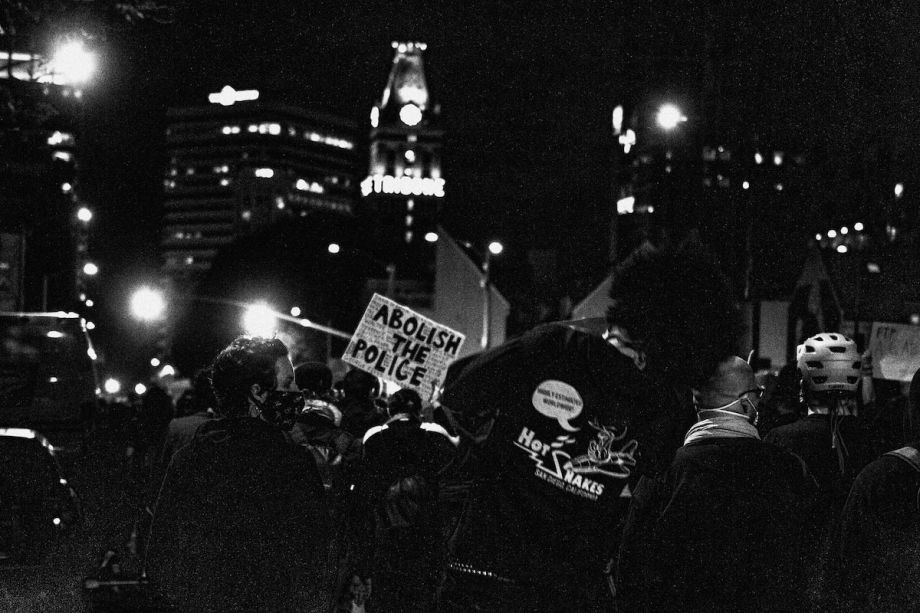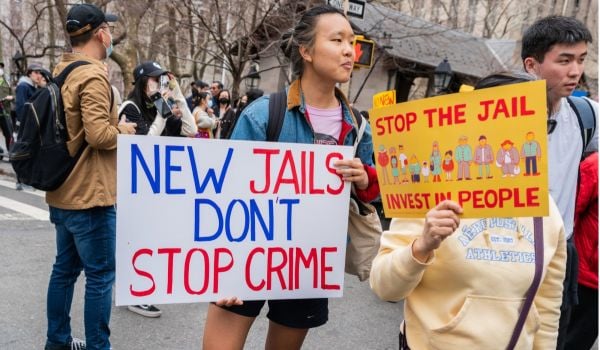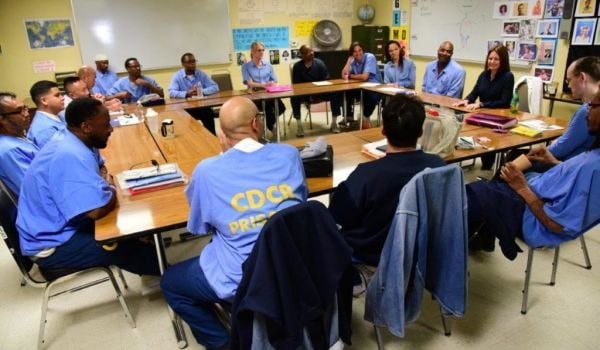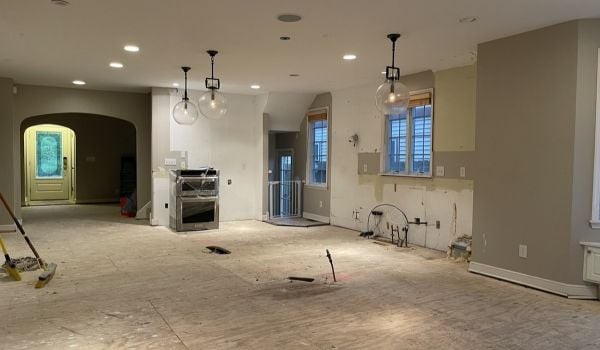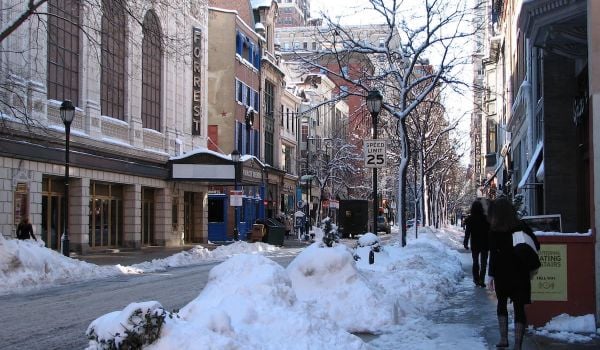This story was originally published by Yes! Magazine.
Our society is addicted to punishment. For the last 50 years, we have expanded police forces, passed laws criminalizing poverty, and incarcerated people for longer and longer periods of time. People returning from prison often find themselves shut out of housing, higher education, jobs, public benefits, and other opportunities for the rest of their lives.
This investment in policing and prisons hasn’t made us safe. According to a 2020 study published by the Bureau of Justice Statistics, only 40% of violent victimizations were reported to police that year. As Danielle Sered writes in her 2019 book Until We Reckon: Violence, Mass Incarceration, and a Road to Repair, “More than half of the people who survive serious violence prefer nothing to everything available to them through law enforcement.” We all deserve to live in communities where our basic needs are met, where the conditions that lead to violence are minimized rather than responded to by armed police.
As Ruth Wilson Gilmore and Angela Davis have taught us, abolition is a project of creation. To end criminalization, policing, and prisons, we need to build up life-affirming practices, institutions, and infrastructure that generate care and safety.
We need to build care infrastructure on several levels: personal, interpersonal, and communal. We think of these as concentric circles, with the built environment — our homes, public spaces, schools, etc. — as a container for all of them. What we build up at the core radiates outward, and that, in turn, radiates back in, shaping new possibilities. Each circle shares the same center: a new set of core values. Unbuilding racist, patriarchal, ableist, and capitalist systems rooted in punishment and control requires starting with care, accountability, interdependence and connection, and an unshakeable commitment to the idea that no one is disposable.
At the personal and interpersonal level, building care infrastructure means developing new capabilities and practices. It’s learning how to have restorative conversations, give better apologies, rebuild trust after it’s broken, and move through conflict in constructive ways. It involves healing from trauma in community with others. One example of this is how the youth organization Detroit Heals Detroit fosters youth-led healing hubs for Detroit teens, creating space in schools for young people to heal trauma through breaking bread, writing, conversation, therapy, and song.
It also means working with neighbors and co-workers to plan alternatives to calling the police. Examples include pod-mapping, created by the Bay Area Transformative Justice Collective. Pod-mapping involves mapping our own networks of care and discussing them with one another. It can equip us to recognize the care and connection in our lives (and gaps that might exist) and make plans for activating those networks when we’re vulnerable. At the heart of these efforts is an awareness that relationships, community, and care keep us safe.
At the community level, we need to build up local ecosystems of care through transformative and restorative justice networks; worker-owned cooperatives; community fridges for food-insecure families; unarmed response teams to support people with mental health needs; housing co-ops, food co-ops, and farming collectives; community land trusts; abortion and doula support; and mutual aid. There are many examples of such community-led projects cataloged online by One Million Experiments.
It’s inspiring to think about what’s possible when efforts like these are knitted together at the neighborhood or city level. On Chicago’s South and West Side, the Just Chicago coalition is creating a solidarity economy landscape of community land trusts, worker-owned cooperative businesses, participatory budgets, and public banks. They aim to replace racial capitalism and the physical environment it has produced — shuttered buildings and vacant lots — with a nonexploitative local economy and safe public spaces.
As part of the shifts required for abolition, we need to dismantle and reimagine the physical world around us with a diverse range of life-affirming spaces. Architects and developers such as Designing Justice + Designing Spaces in Oakland are working with community organizers to create restorative justice centers, youth spaces, specialized housing and education projects, survivor spaces, mental health care and well-being centers, and diversion and re-entry spaces.
In Los Angeles, JusticeLA successfully blocked the county’s multibillion-dollar jail expansion and are working toward a shift in caring for people — rather than incarcerating them — through backing projects such as Restorative Care Villages that prioritize healing over punishment.
As always, the best ideas and examples of where we need to go and how we get there come from people who have borne the brunt of the violence of our current system. The National Council for Incarcerated and Formerly Incarcerated Women and Girls is working with women and girls across the country to advance an affirmative vision of the world we need. They’re stopping the construction of prisons as they campaign to end women’s incarceration state by state and build up co-ops and collectives.
Groups like Justice 4 Housing in Boston are imagining and planning re-entry housing that allows individuals to heal from the trauma experienced while incarcerated. Their housing policy centers on dismantling an archaic public housing system rife with discrimination against court-involved and formerly incarcerated people and their families. Justice 4 Housing is pushing local housing authorities to mandate housing vouchers for people returning to their community after incarceration, the first time a housing advocacy organization led by formerly incarcerated people has led such a campaign.
We need to use interdependent, multidisciplinary approaches to come up with the life-affirming infrastructure we need. And we must fight to align our resources — like public budgets — with this care infrastructure.
In cities such as Minneapolis, Seattle, and Durham, North Carolina, organizers have crafted “people’s budgets” that call for cuts to police departments and for investments in life-affirming institutions that put health first, prioritize people over profit, fund prevention rather than punishment, and help communities thrive.
Let’s follow their lead. Let’s build.

Amanda Alexander is a racial justice lawyer, historian, and founding executive director of the Detroit Justice Center.

Deanna Van Buren is an activist, architect, artist, and co-founder and executive director of Designing Justice + Designing Spaces.

